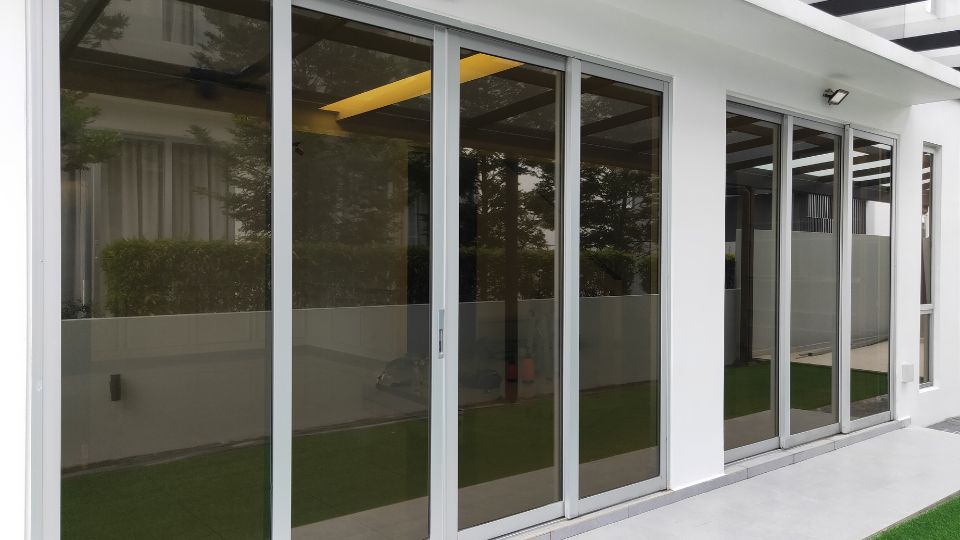From Planning to Execution: What to Expect
Installing commercial glass can significantly enhance your business’s space, delivering both a contemporary aesthetic and functional advantages such as improved natural light and energy efficiency. Whether you’re revamping an existing structure or embarking on a new construction project, grasping the intricacies of the installation process is crucial for making informed decisions and achieving a successful result. This detailed guide will navigate you through every stage of commercial glass installation, including meticulous planning, precise preparation, careful execution, and the essential finishing touches. By understanding each step, you can ensure a seamless installation that meets your design goals and operational needs.
From Planning to Execution: Commercial Glass Installation
From planning to execution, commercial glass installation requires careful attention to detail and coordination. Begin by developing a comprehensive plan that outlines your goals, glass specifications, and design preferences. Collaborate with experienced professionals to ensure that all aspects of the installation are well thought out, from obtaining permits to selecting the right type of glass. Accurate planning sets the stage for a smooth installation process.
During execution, follow the established plan closely. Prepare the site thoroughly, install the frames and glass with precision, and apply necessary seals and fasteners. Monitor the installation process to ensure that all steps are executed as planned. Proper execution ensures the glass functions well and meets your aesthetic and performance expectations.
Understanding Your Needs
Understanding your needs is the first step in a successful commercial glass installation. Start by defining the primary purpose of the glass in your space. Are you aiming for expansive storefront windows, functional glass partitions, or decorative features? Each type of glass serves a different role, from enhancing visibility and aesthetics to providing privacy and security. Consider how the glass will impact your business’s functionality and design.
Next, evaluate the specific requirements for your glass installation. This includes choosing the right type of glass—such as tempered, laminated, or insulated—based on factors like durability, safety, and energy efficiency. Assess the design and aesthetic preferences to ensure the glass complements the architectural style and overall look of your building.

Planning and Design
Effective planning is key to a smooth installation process. Here’s how to go about it:
- Hire Professionals: Engage with a reputable glass contractor or installer who has experience with commercial projects. They can provide valuable insights and ensure that the installation meets industry standards.
- Create Detailed Plans: Work with your contractor to develop detailed plans and specifications for the glass installation. This includes measurements, type of glass, frame systems, and any special requirements.
- Obtain Permits: Check local building codes and regulations to determine if you need permits for the installation. Your contractor can assist with this process and ensure that all necessary approvals are in place.
- Budgeting: Establish a budget for the project, including costs for materials, labor, permits, and any additional expenses. A detailed budget helps avoid surprises and keeps the project on track.
Preparing the Site
Preparing the site is crucial for a smooth commercial glass installation. Start by removing any existing structures or old glass carefully to avoid damaging surrounding areas. This may involve dismantling frames and clearing out debris, ensuring the workspace is clean and organized. Inspect the area thoroughly for any structural issues or damage that could affect the installation. Addressing these problems beforehand will prevent complications later.
Next, focus on preparing the framework where the glass will be installed. Ensure that all support structures, such as frames and supports, are properly aligned and securely anchored. The surfaces should be smooth, level, and free from imperfections to guarantee a precise and secure fit for the new glass.
Installation Process
The actual installation of commercial glass involves several critical steps. Here’s what to expect:
Frame Installation
Install the frames or support structures securely, ensuring they are level and properly aligned. Accurate installation of the framework is essential for supporting the glass correctly and achieving a precise fit. Use quality materials and check for stability.
Glass Handling
Handle the glass with care to avoid damage. Use appropriate equipment and techniques for moving and positioning the panes. Ensure that the glass is fully supported and protected during transport and placement to prevent any cracks or breakage.
Pane Installation
Place the glass panes into the pre-installed frames or supports, ensuring a snug and precise fit. Use shims or spacers as needed to align the panes correctly. Confirm that the glass is positioned properly before securing it.
Sealing and Securing
Apply seals or gaskets around the glass to prevent leaks and drafts. Secure the panes using fasteners or adhesives according to manufacturer guidelines. Ensure a tight seal and proper adhesion to maintain the integrity of the installation.
Finishing Touches
Complete the installation with finishing touches such as trim or caulking. These details enhance the appearance and provide additional protection. Inspect the entire setup to ensure a clean, polished look and address any final adjustments or imperfections.
Maintenance and Care
Regular maintenance is key to keeping your commercial glass in optimal condition. Start with routine cleaning using appropriate solutions and tools to remove dirt, smudges, and grime. Avoid abrasive materials that can scratch the surface. Clean glass surfaces regularly to maintain clarity and appearance, and inspect for any signs of damage or wear during cleaning.
Additionally, periodically check the frames and seals around the glass. Ensure that there are no gaps or leaks and that all components are functioning correctly. Address any issues promptly to prevent further damage and maintain the glass’s performance and longevity. Scheduling professional maintenance can also help keep your installation in top shape.
Navigating the Commercial Glass Installation Process
Navigating the commercial glass installation process involves understanding each phase and executing it with precision. Start by assessing your project’s requirements, including the type of glass needed, design preferences, and budget. Collaborate with a professional installer to develop a detailed plan that covers everything from site preparation to final touches. This upfront planning helps avoid surprises and ensures that all aspects of the installation align with your expectations.
As you move through the installation, maintain clear communication with your contractor and monitor progress closely. Ensure that each step, from handling and positioning the glass to sealing and securing, is executed accurately. Proper navigation through the process guarantees a successful installation, delivering both functional and aesthetic benefits.
Conclusion
Commercial glass installation is a transformative process that enhances a business’s aesthetics and functionality. By understanding each step—from planning and preparation to installation and maintenance—one ensures a successful project. Vista Glass of Sahuarita, located in Sahuarita, provides expert guidance and high-quality service throughout the glass installation journey. Whether updating an existing space or designing a new one, careful planning and professional execution will help meet and exceed expectations. Contact Vista Glass of Sahuarita to get started and experience the benefits of top-notch commercial glass solutions.

